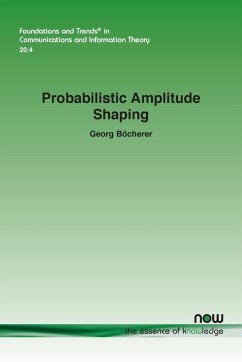Probabilistic amplitude shaping (PAS) is a practical architecture for combining non-uniform distributions on higher-order constellations with off-the-shelf forward error correction (FEC) codes. This efficient and practical technique has had a large industrial impact, in particular in fiber-optic communications. This monograph details the practical considerations that led to the invention of PAS and provides an information-theoretic assessment of the PAS architecture. Because of the separation into a shaping layer and an FEC layer, the theoretic analysis of PAS requires new tools. On the shaping layer, the cost penalty and rate loss of finite length DMs is analyzed. On the FEC layer, achievable FEC rates are derived. Using mismatched decoding, achievable rates are studied for several decoding metrics of practical importance. Combining the findings, it is shown that PAS with linear codes is capacity-achieving on a certain class of discrete input channels. Written by one of the inventors of Probabilistic Amplitude Shaping, this monograph contains a wealth of insights into the theory and practical implementation of the technique in modern communication systems. This is a must read for engineers and students of communications.








